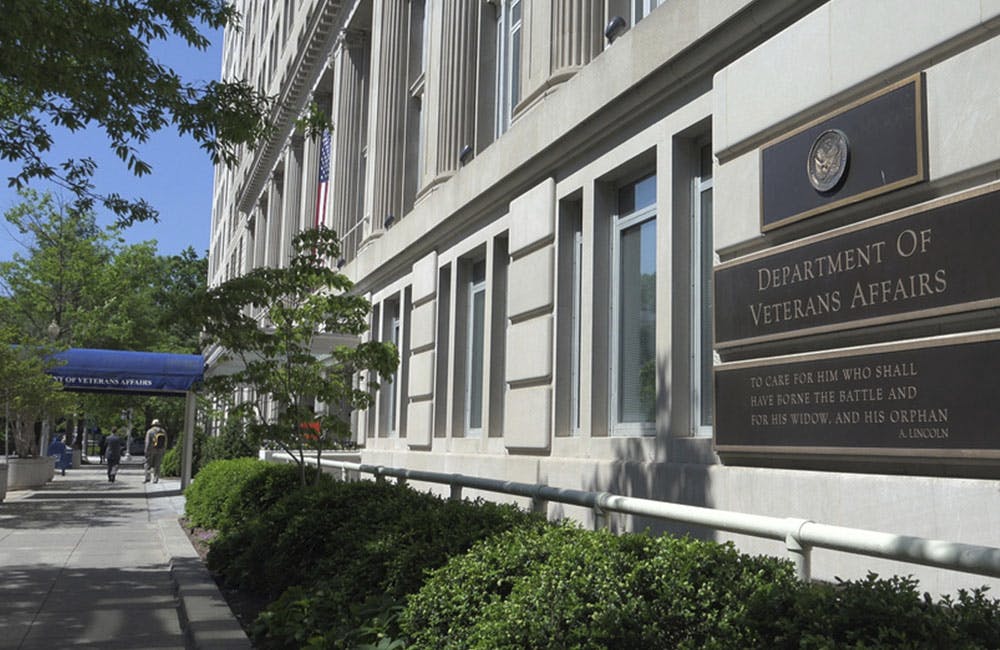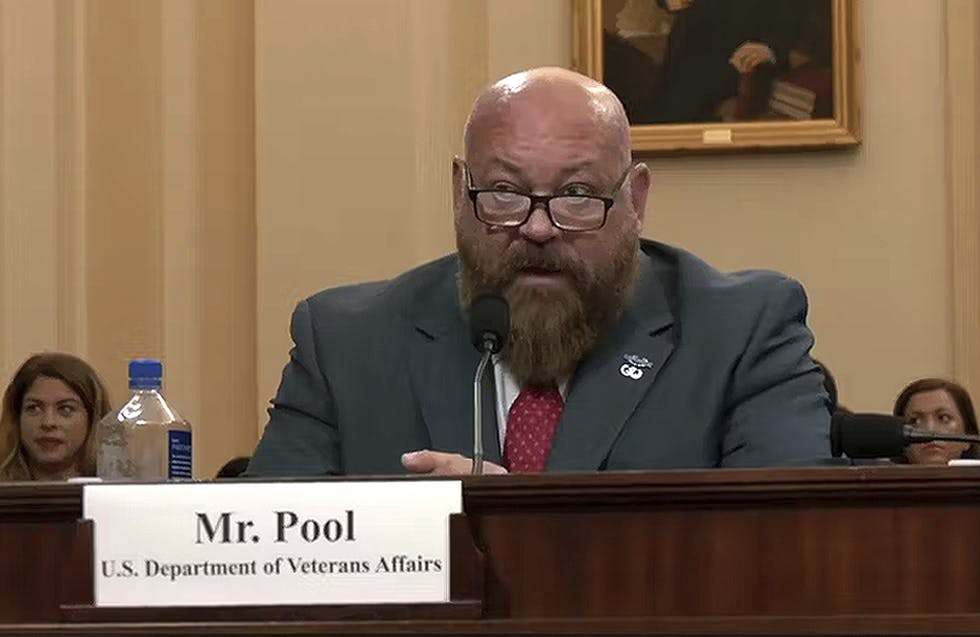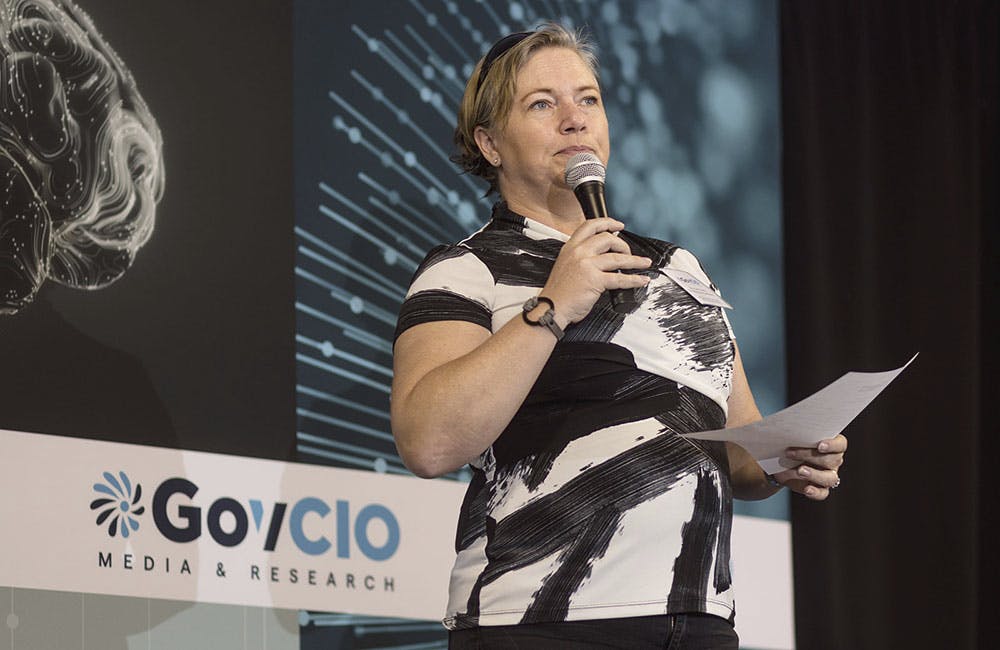CIO La’Tanya Burton: Leading Health Advancements Through Technology at NIH Institute
The veteran leader discusses the importance of IT support and mentorship for technologists.

Since 2012, National Institute of Arthritis and Musculoskeletal and Skin Diseases (NIAMS) CIO La’Tanya Burton has played a critical role at the institute. With previous federal government experience in programming at the National Weather Service, as a database administrator at the Office of NOAA Corps, a technical deployment manager at the Customs and Border Protection, and also U.S. Army Reserve chief warrant officer, among many others, Burton sees a lot of value in how technology can help researchers innovate public health.
NIAMS is leading the way to advance health research related to bones, muscles, joints and skin diseases, as well as improving diagnostic and treatment methods for patients. This scientific and data-driven mission is accelerated by technological innovation and research support tools, such as cloud computing, expanded data storage and analytics capabilities. Burton shared some of the tech advancements going on at the agency, plus some advice on how technologists can advance in the IT field and public service.
What brought you to NIH and NIAMS?
Earlier in my career, I worked on the NIH campus in Bethesda, Maryland, in the Office of Research Services, which provided enterprise-level support to the NIH community. There, I gained an appreciation of the important role NIH plays in advancing scientific discovery. I also grew to love and embrace the mission, vision and values of NIH.
I left NIH to pursue another federal opportunity that enabled me to continue learning and growing in my profession, but I never forgot how much I valued my experience at NIH. When a chief information officer position opened up at NIAMS, I felt it was a unique opportunity to re-join an organization I valued and to do so at the Institute level. NIAMS has been a great place to work, especially if you have been an athlete all your life. I have had my share of sports injuries, tendinitis, as well as chronic plantar fasciitis.
In many ways, I modeled my career after my father’s. He retired from the federal government as a computer technologist, working most of his career at the National Weather Service and the Department of Justice. He was also a master sergeant in the U.S. Army Reserves — now retired. I joined the Army Reserves right out of college and had a terrific 23-year career that included two tours of duty in the Middle East for Operation Desert Shield/Storm and Operation Iraqi Freedom.
My first job in the federal government upon graduating from high school was with the Department of Health and Human Services’ Public Health Service. I had many great mentors in that job who really taught me the importance of attention to detail, finding enjoyment in what you do and the importance of public service.
How has your experience and background prepared you for success in this industry?
One of the aspects of my professional background that prepared me for success in the industry — both as a federal employee and an Army Reservist — is that throughout my career, I have sought out and was given assignments that stretched and challenged me. I have also been very fortunate to find very good mentors. I have had bosses who understood my need to learn, grow and take on increased levels of responsibility, and the assignments I have had in my career have contributed to my success.
I am a big believer that you can’t be afraid to fail — it’s often the best teacher. I also learned early on in my career the value of building a professional network, one that is reflective of both your current as well as future interest areas. When I started in IT, it was considered a male-dominated career path. I was the only African American woman during my entire four years in undergraduate school studies in computer science. This did not deter me, but it certainly made it difficult to find a mentor who looked like me once I started my career.
There is no substitute for perfecting your craft each and every day, for building your portfolio of skills, knowledge and experience, and for being self-directed and highly motivated to solve problems, achieve results and energize others. Never stop reading and learning.
What are NIAMS’ IT priorities?
We exist to support the science, and technology has been a phenomenal enabler when it comes to the “speed-of-science.” Historically speaking, no one would have imagined the pace at which high-speed computing has progressed, which has enabled our researchers to aggregate terabytes of data; no one would have imagined the level of cyber threats that are constantly trying to gain access to our systems. I could go on, but suffice it to say that our primary goal is to provide cutting-edge technologies that allow our scientific community to securely acquire, share, analyze and distribute data that contribute to scientific advances in support of their mission.
What are the challenges NIAMS is facing with its IT infrastructure?
NIAMS research data is doubling every couple of years; therefore, the demand for storage, enterprise or local, continues to grow increasingly along with the increased demand to move large datasets (over 10 terabytes) from NIH’s supercomputer Biowulf to NIAMS Enterprise Storage. To put that into perspective, NIAMS research data growth, by itself, is expanding at a rate of 0.5 petabytes per year because of the DNA sequencer technology, the shared NIH electron microscopy, in addition to Biowulf data. Our team is finding creative ways to free up storage via compression, archiving and temporarily parking files on storage designed for other purposes, but that is not a long-term solution.
As the types and volume of new cybersecurity threats continue to rise, we spend hours supporting information security events, such as remediating new exploits and critical vulnerabilities and adhering to new mandates and policies.
To address a number of these interrelated challenges, in fiscal year 2021, NIAMS’ Scientific Information Technology Branch will build an IT Modernization Analysis Project to identify the Institute’s research support requirements for 2021 to 2026 to support expanded computational and storage requirements. Modernization analysis will include meeting federal security requirements and federal “cloud smart” computing and storage policies.
We will also build a partnership with our Intramural Research Program (IRP) researchers to build a data-governance vision and framework with the goal of implementing a sustainable data requirement, metrics and management process that supports the expansion of our data and research needs.
Do you have advice for the next generation of technology leaders?
First, look for opportunities to learn and grow — you can’t be an expert at everything, so pick those areas where you believe you can make the most meaningful contribution. Don’t be afraid to fail, which is another way of saying you have to try. Second, find good mentors. I use the plural term because I think it’s important to seek out mentors at different stages of your career, to find people who will challenge your thinking and push you to be your best. Third, build your professional network. This is critical in shaping your career, but it’s also invaluable because you will find subject matter experts who help you solve problems in your own organization faster and better than you could do on your own. Fourth, keep up in your field by reading relevant literature, attending conferences, lunch seminars and online webinars. Finally, don’t be afraid to say, “I don’t know.” Be a change agent, not a change resistor. This field is changing.
Where do see the future of clinical research and advancements in technology for this field?
Data sharing, analysis and visualization will continue to play an essential role in generating research inquiries and collaborations that drive new theories, discoveries and treatments. Information data security, data ownership, and user-driven, restricted data-sharing management will be mandatory. Advancements in microscopy and digital imaging will enhance the ability to physically observe and capture cellular biomechanics that provide tangible evidence rather than relying on theoretical computational models.
Improvements in the reliability and accuracy of wearable technologies have the potential to directly affect patient care and therapies that inform clinical decisions in real time. Virtual reality is poised to create a significant impact in scientific training and education, and in the presentation of scientific models, experiments, procedures and breakthroughs. Remote secure data-sharing tools used by NIH researchers, external partners and patients for collaboration will be mandatory, such as BOX and virtual meeting platforms.
All of these future technology advancements will drive innovation and lead to improved understanding of, and outcomes for, the diseases that NIAMS researches.
This is a carousel with manually rotating slides. Use Next and Previous buttons to navigate or jump to a slide with the slide dots
-

NSF Wants Industry Driving Quantum Innovation
The agency is pushing for partnerships to enhance the research community as Congress weighs additional legislation.
3m read -

White House Science Chief: US-Driven AI Sets Global Standards
Michael Kratsios outlined how American AI technology on the global stage will help standardize the tech and counter China’s influence.
5m read -

Modernizing Critical Infrastructure in the Face of Global Threats
Officials are expanding the latest strategies in boosting defense infrastructure, including securing satellite communications, upgrading enterprise-wide technology, optimizing data management.
20m watch -

Trump AI Orders Call for Speed in Building Infrastructure
The directives call for expanding AI infrastructure, streamlining federal permitting and promoting AI exports.
4m read -

DOD Accelerates Software Modernization with Agile DevSecOps Push
The Pentagon's software implementation plan tackles cultural hurdles and integrates security early to deliver critical capabilities faster.
6m read -

White House Unveils AI Action Plan to Secure Global Dominance
The strategy outlines steps to accelerate private sector innovation, build critical infrastructure and advance U.S. leadership in AI policy and security.
3m read -

VA's Platform One Powers Rapid Innovation to Bolster Digital Services
VA's Platform One accelerates software development timelines from weeks to hours, ultimately enhancing digital services for veterans.
5m read -

Federal Leaders Receive Federal IT Efficiency Flywheel Awards from GovCIO Media & Research
Five federal IT leaders received Flywheel Awards for driving innovation and modernizing technology at the Federal IT Efficiency Summit.
5m read -

Doing More with Less is Muscle Memory for IRS, Former Deputy CIO Says
Darnita Trower discusses her experience, the legacy she’s left behind and how she pushed the IRS to modernize itself,
20m watch -

Opinion: Original Intelligence Is the Missing Piece for AI Transformation
Limitations of AI agents and development drive growing needs for workforce development and "original intelligence."
3m read -

VA CIO Targets Modern IT and Smarter Workforce Alignment
Agency leaders told lawmakers they are focused on trimming legacy systems and restructuring its workforce to streamline operations.
3m read -

Pentagon's $200M AI Contracts Signal Broader Effort to Transform Talent
The Army is leveraging Silicon Valley, reservist programs and new hiring strategies to integrate critical digital skills in its ranks.
5m read
















